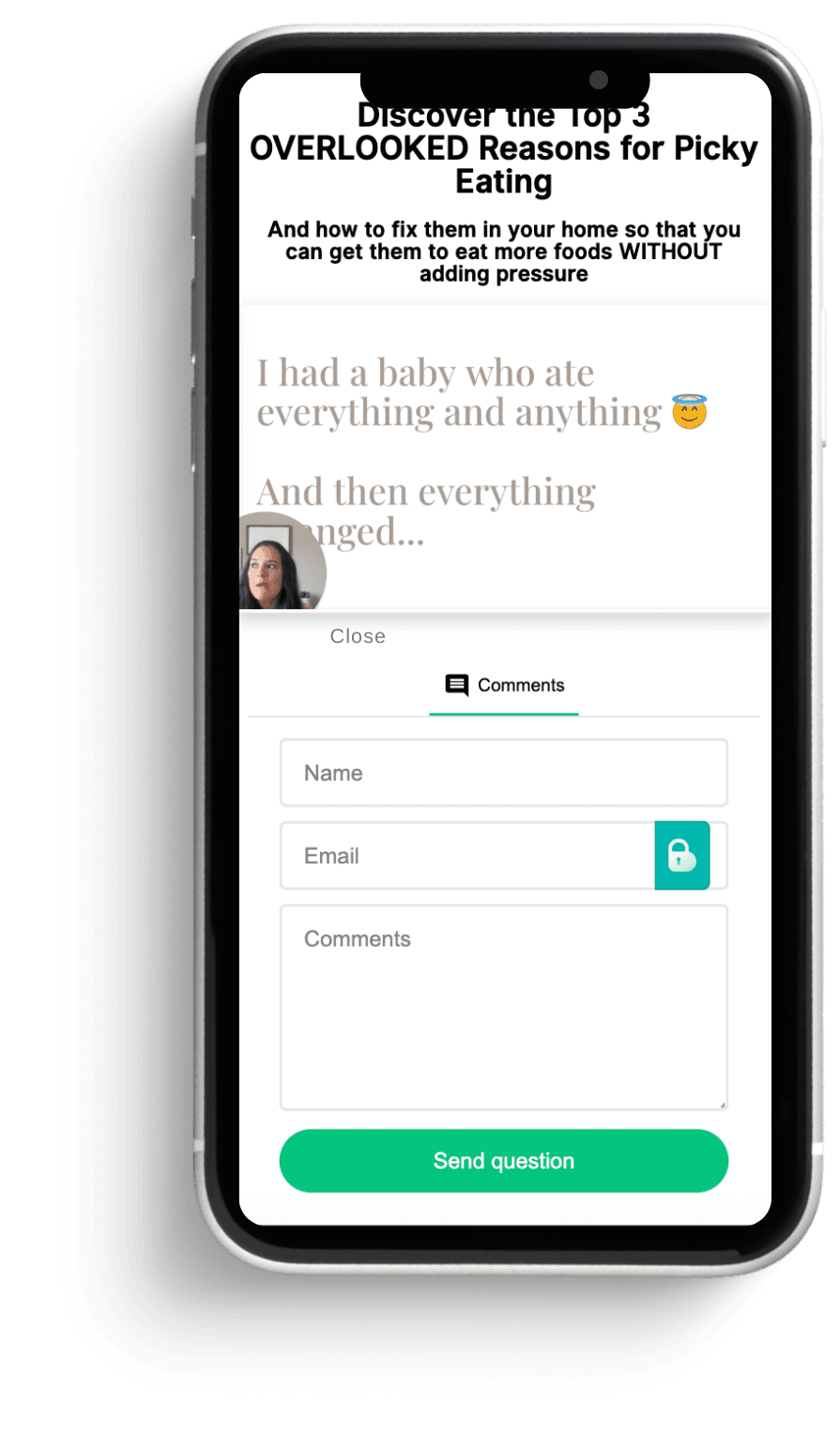
Speak Their Language: 3 Communication Missteps to Avoid with Your Picky Eater
Positive food communication is not only vital for connecting with children but also for guiding them through the often tricky journey of food exploration. In today’s blog post, we’ll discuss three specific mistakes I hear parents make, mistakes that might unintentionally set children up for failure rather than success.
These mistakes aren’t just general errors; they’re specific expressions and questions that parents may inadvertently use, hampering positive food communication. By understanding these mistakes, we can foster success at the dinner table rather than setting our children up for failure.
Mistake 1: “Do you like it?”
For parents, asking “Do you like it?” is a supportive and loving question by nature. However, this innocent question, though well-intentioned, can create a pressure-filled environment that doesn’t promote positive food communication. Asking a child whether they like a food immediately after tasting it can lead to two problematic outcomes:
- People-Pleasing Response: The child may say yes, even if they mean no, feeling trapped in that decision later.
- Committing to a “No”: A firm no might close the door on future attempts to introduce the food.
Neither of these outcomes are what we want when battling picky eating. To avoid this “mistake,” practice intentional communication.
Long work days, endless chores, and picky eaters can seriously drain our parent brains. So, if being intentional about how you communicate about food at the dinner table is just too much to add to your plate, try not talking about food at all.
Why? Because it’s better to not say anything at all than to say the wrong thing.
Side note, there is a nuance to this I’d like to be clear on. This particular “mistake” doesn’t apply to every scenario. If you’re vacationing in Hawaii or traveling through Europe and trying new foods, it’s totally fine to ask if they’ve enjoyed that new experience. The advice I’m outlining here really applies to dinner table meals when you’re working with foods you’ve been trying to introduce for months.
Mistake 2: You’re going to get hungry.
Similar phrases include, “Your belly needs food!” and “You must be hungry!”
When it comes to eating and hunger, it’s common for parents to think we know everything about our children. In my own home, I’ve become so skilled at reading every eyebrow raise and smirk, I feel like a mind reader. However, I have to remind myself I’m not—and the same goes for you too.
As adults, even the closest person in our lives can’t tell us when we’re hungry and when we’re not. So, don’t try to do the same with your kids. Kids need to experience things for themselves. And when it comes to hunger, that means they have to learn how to cope, manage, and try things on their own.
The best thing you can do is teach your kids how to identify feelings of hunger and how to manage it within your family’s culture and eating routine. Positive food communication includes respecting their autonomy and helping them to figure these things out for themselves.

Still having trouble feeding your picky eater?
Sign up for our FREE class to get more answers to your questions
Mistake 3: “You loved this yesterday.”
Reminding kids of their past food preferences might seem helpful in the moment, but like mistake #1, it can corner them. Children in this position may feel pressured to eat the food when they don’t really want to or double down on their distaste in the moment and reject the food well into the future. What we’re trying to do here is help kids embrace food experimentation, not commit to certain foods for the next 18-years.
So what’s wrong with mentioning that they liked this food before? It goes just a tiny bit too far in terms of being helpful. The way to help kids tackle foods they’re experienced before is not to remind them about how they felt about it before. The best way to go about this is to help them identify the food in front of them, so they can recognize it for themselves.
One thing you can do to help them identify foods is practice transparency. That means you’re never sneaking food into their meals or trying to trick them into eating something new. If you do that, they won’t be able to identify it in the future. For example, if you hide spinach in their yummy fruit smoothie, they’ll have no idea they like spinach when it’s served to them again.
Instead, identify foods in front of them, before, during, and/or after they’re working with that food at the table or in the kitchen. This will help them recognize the food in the future, even when it’s presented differently, like in a smoothie versus a side dish.
The goal is to commit to experimentation. Maybe try grapefruit in a smoothie today, and slices tomorrow? Kids can experiment like this effectively when we’re telling them how they should respond. Now, this doesn’t mean you shouldn’t help them articulate their thoughts, it just means we don’t want to put them in a corner.
Final Thoughts
Positive food communication is more than merely avoiding certain phrases; it’s about creating a trusting, nurturing environment that allows children to explore their culinary world. The three common mistakes discussed here are not definitive indicators of parenting failure but opportunities for growth and connection.
By embracing positive food communication, parents can build a stronger, healthier relationship with their children around food. With empathy, patience, and intentional communication, this journey can become a joyous family experience that fosters lifelong healthy eating habits.

Hi there! My name is Alyssa
I'm a registered dietitian and picky eating specialist with nearly a decade of experience, mom of three, and the founder of Nutrition for Littles. I'm dedicated to making mealtimes enjoyable and nutritious for families.
Do you need more help with your picky eater? I want to invite you to my free class to reverse picky eating!
Sign Up